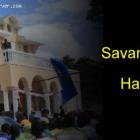ADVERTISEMENT
economy - Haiti Observer Blog
economy, Haiti Observer Blog. Read the following articles about economy
U.S. to Haiti Give me my money back
In Haiti's 2015 presidential elections, the United States, along with other international bodies, provided a total of US$38 million to Haiti's Conseil Electoral Provisoire (Provisional Electoral Council, CEP). The U.S. spent $33 million on the 2015 elections and in last July, has threatened to withhold further funds, because during the last elections, political turmoil resulted massive frauds and unacceptable election results, and following that President Privert announced his decision to re-run the presidential race. Later, President Privert assured the public that the elections of October 9, 2016, will be funded nationally. He has affirmed that the $55 million needed for the elections is available in the public treasury. As per Finance Minister Yves Romain Bastien, the election money received for the last election was never in the hands of the Haitian authorities. He has also said that the upcoming polls would be largely paid for through funds collected from a port, the central bank and Haiti's National Credit Bank. Funding of other government programs would be largely excluded because the port and two banks are good profit making concerns which they ordinarily do not share with the state, he added.
Canada Five-Year Strategy for Haiti Development
Canada renewed strategy for (2015-2020) engagement in Haiti
Canada is continuing its engagement with Haiti, renewing its strategic five year plan from 2015- 2020. Canada's main focus will be on sustainable economic growth in support of a flexible economy for Haiti. The mechanisms for growth will involve raising private sector participation and pushing for innovative financing. Canada anticipates it will achieve considerable success in raising the standard of living for Haitians over the next several years.
Canada's five-year strategy program will cover five priority areas of infrastructure development in Haiti:
Foreign Investment in Haiti in decline
A recent report on the "Foreign Direct Investment (FDI) in Latin America and the Caribbean" released by the Economic Commission for Latin America and the Caribbean (ECLAC) in the last week of May (2015) indicates that the inflows of foreign exchanges in most Caribbean countries, typically depend heavily on their own individual specific sectors. However, the Dominican Republic, the largest economy in the region, is an exception in this regard where the FDI inflows are evenly distributed, in a balanced way, among several sectors like manufacturing, tourism, natural resources and others. The Bahamas and some of the organizing countries of Eastern Caribbean States (OECS) generate maximum inflows from the tourism sector, while the major FDI inflows in Suriname, Guyana, and Trinidad and Tobago come from natural sources. In the last year (2014), Haiti and Jamaica had received their maximum FDIs in the transport and telecommunication sectors. The amount of Foreign Direct investment in Haiti between the years 2001 to 2014 shows the following corresponding values of investment (as per index mundi & Santandertrade):
IMF expects Haiti economic growth of four per cent in 2015
IMF projects 4% Economic Growth for Haiti in 2015 but Financial and Domestic Destabilization could occur
Under a new initiative called the Extended Credit Facility (ECF), signed in 2014, Haiti has benefited from ECF assistance in sustaining economic growth. The International Monetary Fund (IMF) projects a growth rate of 4% in 2015 for the country. But there has been reduced gross domestic product (GDP) at 2.7% in 2014, compared to 4.2% in 2013. Inflation is between 4% - 6%.
The Haitian government has not been able to reduce the high fiscal deficit, partially associated with Hurricane Sandy. Infrastructure improvements to stimulate growth strengthen the medium-term forecast, but is liable to negative risks.
Plan for Haiti to maintain its fragile stability
Haiti's stability has been a hard-won battle, and the country's grip on it remains a tenuous thing. The question on many minds now is how to strengthen that hold. How does Haiti maintain its fragile stability?
A 2007 document published by the International Crisis Group explored this while discussing former President Rene Preval's security challenges. The argument was that the stability and security of the country continued to be on shaky ground. While it looked on this weakness, it also took some strengths into consideration before making recommendations to the international community, UN agencies, the Haitian President and Government.
Doing Business 2015, Haiti inproved by one Percent in Business Environment
Although Haiti is making small steps in becoming a friendlier environment to business, it is important to notice that these steps are forward. According to the latest report Doing Business 2015 issued by the World Bank, Haiti overall improved by one point, moving from a position of 181 in 2014 to 180 for 2015.
Here are the areas Haiti was rated upon:
In Starting a Business, Haiti did not do well there. It lost one point from a year ago ranking 188th out of 189 economies in the world. It is still averages around 97 days to open a business in Haiti.
Haiti and Dominican Republic, strongest economic growth in 2014 and 2015
Haiti must be doing something right. The island comprising of Haiti and the Dominican Republic is expected to lead the entire Caribbean region economically in the next two years. Based on the latest update of the International Monetary Fund's World Economic Outlook report, these two countries are expected to grow on an average between 3.75 percent for Haiti and 4.75 percent for the Dominican Republic.
Are we witnessing the shifting of power in the region?
Experts already predicted if this trend continues, in just a few years, the Island of Hispaniola will be the center of economic activities for the region.
Haiti to become emerging economy by 2030
If Haiti is to become an emerging economy by the year 2030, great national emphasis must be placed on education with a strong focus being placed on science and mathematics. Such is the sentiment shared by many whose vision is the thrust that drives the Haitian Bioscience Initiative in their endeavor to provide young Haitians with rudimentary science lab techniques.
The initiative is a partnership with academics, professionals and educators who are striving to provide teaching of the necessary techniques such as environmental monitoring, microbiology, wet chemistry as well as molecular biology. Their vision for the long term is to create an up-to-date bioscience lab facility which would serve to provide education in the life sciences for the youth of Haiti.
Haiti expects to export US$ 1.2 billion in garment in 2014
Haiti had a good year in 2013 where garment export, a fast growing market for the nation, is concerned. The sales, totaling $800 million, were gathered from the sale of 20 million groups of T-shirts packed by the dozen and 1.5 million jeans packaged in the same way, among other things. With the standard so high, the country sets its cap further, hoping to export $1.2 billion USD for their 2014 period.
Last year the exports included products such as cotton trousers, suits, innerwear and other outerwear to buyers such as Walmart, Hanes, Gildan, Levy's, Target, Fruit-of-the-Loom and Kohl's. The desire now is to expand that reach and to have the Haitian garment industry permeating not just the United States and Canada, but also countries in Europe, Asia and South America.
Haitian Women, the backbone of the Economy
Haitian women make up over half of the population, and arguably form the backbone of the Haitian economy. A graphical, visual, and metaphorical illustration of this can be witnessed daily in Haiti as women, wearing toks on their heads, carry heavy loads including water, food, market goods and even construction material around for miles in areas such as Port-au-Prince, Cabaret, The Central Plateau, Gonaives and Cap Haitien. All to earn an average wage of just $1 - $2 a day in a struggling economy.
Nevertheless it is clear that women are undervalued and treated as lower-class citizens compared with men. Carrying water using toks is still considered 'woman's work' for example, and they routinely face issues such as wage discrimination.
Our objective is to share with you news and information about Haiti and the people of Haiti. Traditions, habits and the way we were or grew are alive in this site. We highly recommend that you Subscribe to our Newsletter and also share with us some of the things that are memorable and made us unique people.

 Haitian Creole Translation
Haitian Creole Translation  Informative Marketing and Advertising in the Haitian Community
Informative Marketing and Advertising in the Haitian Community  Something to think about
Something to think about  The Town of Savanette, Haiti
The Town of Savanette, Haiti  Life After Death
Life After Death